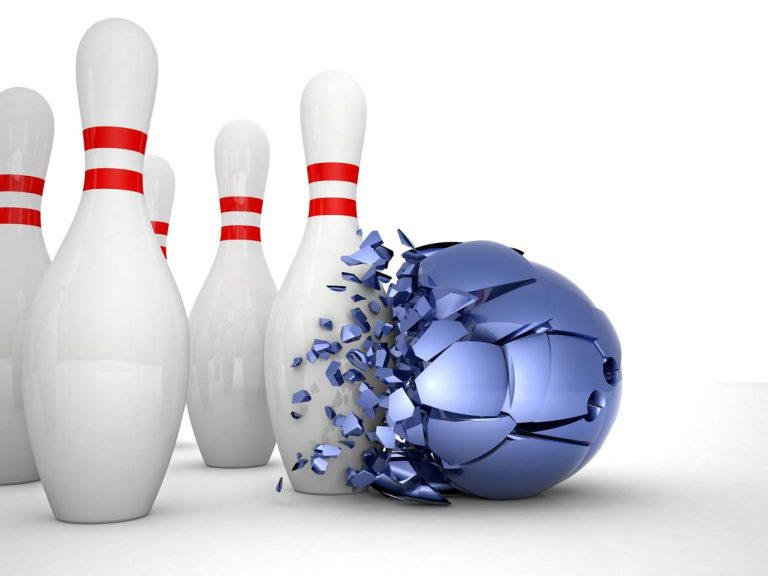Where is 5 Pin Bowling Popular?
5-pin bowling is a variation of bowling that originated in Canada and enjoys widespread popularity within the country. Invented in 1909 by Thomas F. Ryan at the Toronto Bowling Club, it was a response to customers who found the standard 10-pin game too strenuous. It uses smaller balls without finger holes and only five pins, making it uniquely Canadian and different from the more internationally known 10-pin bowling.
Although its popularity is primarily in Canada, 5-pin bowling has carved out a niche among bowling enthusiasts who favor the faster pace and different scoring system. In 5-pin bowling, the pins are worth different points, demanding a strategic approach to the game.
The sport is regulated by the Canadian 5 Pin Bowlers Association, which maintains the standard rules of play, equipment specifications, and facilitates national tournaments.
Key Takeaways
- 5-pin bowling is a Canadian game invented in the early 20th century.
- The sport features smaller balls, five pins, and a unique scoring system.
- It is predominantly played and enjoyed in Canada.
The Basics of Five-Pin Bowling
To understand five-pin bowling, it’s important to grasp its unique equipment and gameplay. This section will provide you with detailed insights into the specialized equipment used in the game and the fundamental rules that govern play.
Equipment and Lane Specifications
When you step into a five-pin bowling alley, you will notice the bowling balls are considerably smaller than those used in ten-pin bowling. They are made of hard rubber or plastic and weigh between 1.1 to 1.6 kilograms (2.4 to 3.5 pounds) with no finger holes. The balls are designed this way to match the size and spacing of the pins.
The alleys, or lanes, are similar to those in ten-pin bowling but are equipped for the smaller ball and pins. The lane specifications include a playing surface with gutters on both sides and a smooth approach area.
Unlike ten-pin bowling, there are usually no lane oil patterns to consider. Additionally, the pins may have a rubber band around their widest part to increase action and scoring potential.
| Bowling Ball Specifications | Lane Specifications |
|---|---|
| Material: Hard Rubber or Plastic | Length: 18.29 meters (60 feet) |
| Weight: 1.1 to 1.6 kilograms | Width: 1.07 meters (3.5 feet) |
| Diameter: 12.7 centimeters (5 inches) | Approach Area: Smooth |
| Finger Holes: None | Gutter: Present on both sides |
| Rubber Band on Pins: Present |
Rules and Gameplay
You will play frames in five-pin bowling, with each game composed of ten frames. The goal is to knock down pins arranged in a V–formation at the end of the lane. Scoring is where things get interesting—the center pin, known as the headpin, is worth 5 points, the pins next to it are worth 3 points each, and the outermost pins are valued at 2 points, allowing for a maximum of 15 points per throw.
| Pin Values |
|---|
| Headpin (center): 5 points |
| Left and right of headpin: 3 points each |
| Outermost pins: 2 points each |
A strike is achieved by knocking down all five pins with the first ball thrown in a frame, scoring you 15 points plus the points from your next two balls. A spare is given when all pins are knocked down with two balls in the same frame. The next throw is added to that frame’s score.
A frame where pins remain standing is referred to as an open frame and is worth only the sum of the knocked down pins.
An important part of the game is the foul line, which you must not cross during your approach and release of the ball. Doing so results in a foul, invalidating any pins knocked down during that throw.
Lastly, a perfect game in five-pin comprises 12 consecutive strikes, leading to a maximum score of 450 points.
Remember, whether you’re aiming for that perfect game or just enjoying a casual day on the lanes, mastering these basics will enhance your five-pin bowling experience.
| Pin Configuration | Score Value |
|---|---|
| Strike (X) | 15 points |
| Spare (/) | 15 points plus pinfall of next ball |
| Split | Sum of standing pins |
Bowling Techniques
Your delivery should start with a proper stance and approach. Position your feet correctly and use the arrows on the lane to aim. The balls in 5-pin bowling have a small diameter and lack finger holes, so they are held in the palm of the hand.
Strategic bowling goes beyond just aiming for strikes or spares. Spare conversion is important, but sometimes knocking down specific pins is more advantageous than going for harder shots, like a split.
A split can often be converted into a spare by carefully targeting the pins. But sometimes ignoring a difficult split and taking higher point pin(s) may make the most sense.
By focusing on these fundamentals, you can increase your score and become more competitive in 5-pin bowling.
| Bowling Tip | Description |
|---|---|
| Stance | Keep feet shoulder-width apart and body square to the foul line. |
| Approach | Move smoothly toward the line; usually, a 4 or 5-step approach is used. |
| Spin | Apply a consistent spin to control the ball’s motion and pin deflection. |
| Arrows | Use the lane arrows as guides for your throws to achieve accuracy. |
Competitive Five-Pin Bowling
Tournaments and Leagues
Organizations such as the Canadian 5 Pin Bowlers Association (C5PBA), Bowl Canada, and the Canadian Bowling Association manage competitive play, providing structure for tournaments and leagues.
Whether you’re a novice or a seasoned professional, you have access to a tiered system, culminating in provincial championships and the chance to compete at the national level.
- Provincial Championships: Serves as a qualifying stage for national-level competition.
- National Championships: The pinnacle event for five-pin bowlers in Canada.
Leagues offer a more regular competitive outlet, ranging from casual weekly gatherings to highly competitive settings. You can join a league that matches your skill level, allowing for consistent development and competition.
Cultural Significance and Popularity
Five-pin bowling, a uniquely Canadian pastime, stands out for its family-friendly appeal and distinctive gameplay. Particularly popular in Canada, it offers a variation to traditional ten-pin bowling with its smaller pins and shorter lanes.
Popularity in Canada
In Canada, five-pin bowling holds a cherished place. This bowling variant was invented in Toronto, Ontario, by Thomas F. Ryan in 1909 and has since woven itself into the fabric of Canadian recreational life. Because 5-pin bowling uses smaller balls and pins, it is more accessible for children and those seeking a less strenuous activity.
You will find leagues and tournaments that are an essential part of many local communities, maintaining the game’s prominence over a century after its inception.
Five-Pin Bowling vs. Other Variants
Five-pin bowling’s appeal partly stems from its differences with other bowling types like ten-pin bowling, duckpin bowling, and candlepin bowling. The five pins are arranged in a V shape or triangle, presenting a unique challenge and faster-paced gameplay.
| Bowling Variant | Pin Size | Lane Length | Ball Size |
|---|---|---|---|
| Five-Pin Bowling | Smaller | Shorter | No finger holes |
| Ten-Pin Bowling | Larger | Standard | With finger holes |
| Duckpin/Candlepin | Different Shape | Standard | No finger holes (Duckpin) / Small (Candlepin) |
This Canadian specialty remains a favored choice for casual and serious bowlers alike, providing a distinctively Canadian twist to the ubiquitous sport of bowling.
If you find a nearby bowling alley with 5-pin lanes , give it a go. The sport can be quite fun, and it’s definitely worth giving it a shot.






